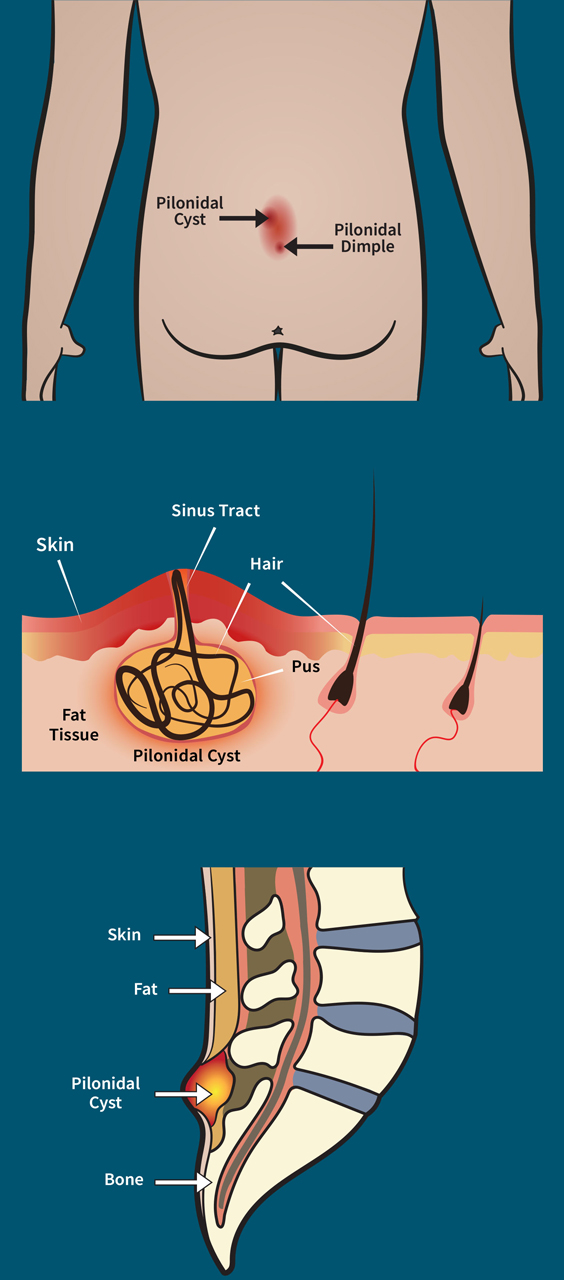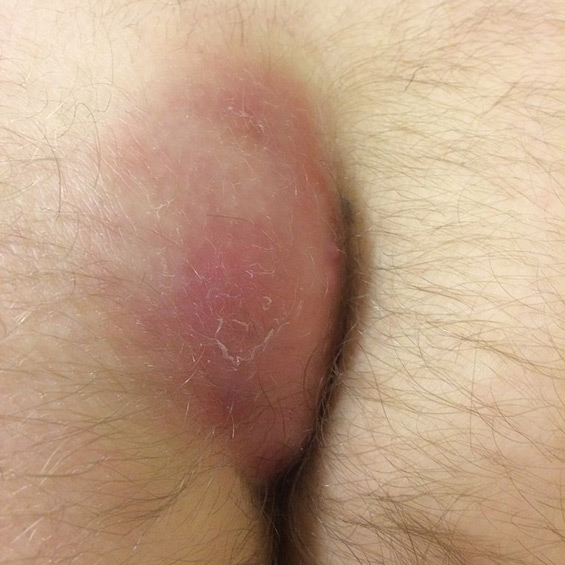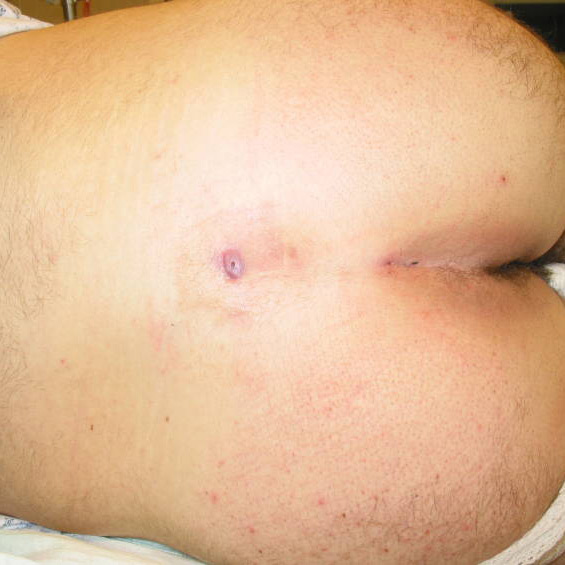Pilonidal disease is an infectious skin condition arising in the upper aspect of the buttock crease.
Pilonidal disease is an infectious disorder arising in the skin overlying the sacrococcyx, or tailbone. It results from the accumulation of hair shafts and debris within traumatized, stretched hair follicles in the intergluteal cleft skin. These follicles, known as midline pits, appear to the naked eye as dilated pores. The process gives rise to symptoms once bacterial infection sets in. Pilonidal disease is most prevalent in males between the ages of 15 and 40 years. Other risk factors include obesity, sedentary employment or lifestyle, increased body hair, and family history. An association has been established between pilonidal disease and polycystic ovary disease..


In its acute form, pilonidal disease presents with a swollen, reddened lump or “abscess” within the cleft. The abscess is filled with pus under pressure, causing a severe and throbbing pain. Sitting becomes extremely difficult. Work or school duties are invariably affected. Fever, chills, body aches, and malaise are seen in the most severe of these cases. If drainage is not achieved in a timely fashion, the body may develop a draining channel known as a sinus tract from the abscess cavity to the nearby skin. In its chronic form, pilonidal disease may thus present with one or more such draining sinus tracts to the side of or within the cleft. The sinus tract fluid may appear bloody, clear, or purulent. Drainage from a sinus tract may be intermittent in pattern and may alternate with the symptoms of pain and swelling. Patients with pilonidal sinus disease have often had multiple emergency room visits and surgical drainage procedures.
CONTACT US TODAY!
Contact us today and let us help you leave your pain behind.





